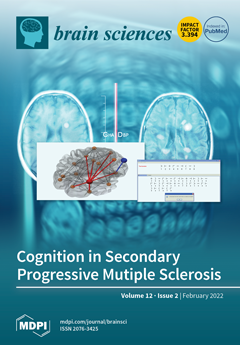p27 and p57 are tumor suppressors that are dysregulated in many cancers. We investigated the immunohistochemical expression of p27 and p57 in ependymoma, with a secondary emphasis on cyclin D1, nestin, and Ki-67. Sixty-five patients diagnosed with ependymoma were included. Clinical and tumoral
[...] Read more.
p27 and p57 are tumor suppressors that are dysregulated in many cancers. We investigated the immunohistochemical expression of p27 and p57 in ependymoma, with a secondary emphasis on cyclin D1, nestin, and Ki-67. Sixty-five patients diagnosed with ependymoma were included. Clinical and tumoral data were retrieved, and the expression of p27, p57, cyclin D1, nestin, and Ki-67 was measured. Pearson’s
χ2 test was used to measure associations and the Kaplan–Meier method was used for survival analysis. p27 underexpression was significantly associated with pseudopalisading necrosis in tumors with foci of necrosis (
p = 0.004). Cyclin D1 overexpression was associated with intracranial (
p = 0.044), recurrent (
p = 0.022) and grade 3 tumors (
p = 0.016); nestin overexpression was associated with supratentorial (
p = 0.025), mitotically active (
p < 0.001), and grade 3 tumors (
p = 0.004); Ki-67 overexpression was associated with supratentorial (
p = 0.044) and grade 3 tumors (
p < 0.001) and the 3 main features of anaplasia. None of the markers were intercorrelated or predictive of overall survival. In conclusion, p27 underexpression in tumors with foci of necrosis signals a pseudopalisading pattern. Cyclin D1, nestin, and Ki-67 are useful markers in ependymoma, but evidence-based cutoff values are required to standardize this interpretation.
Full article






